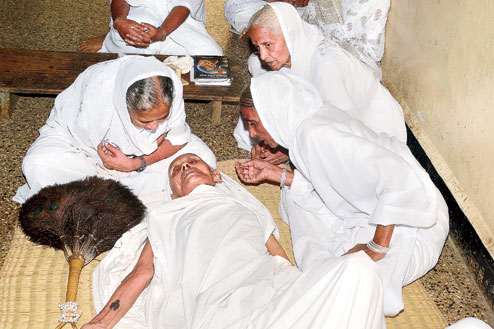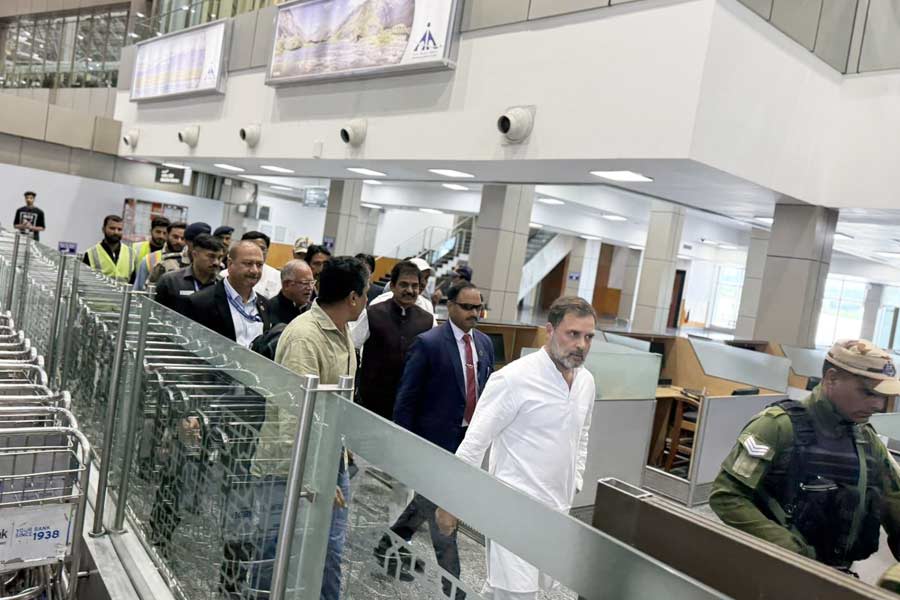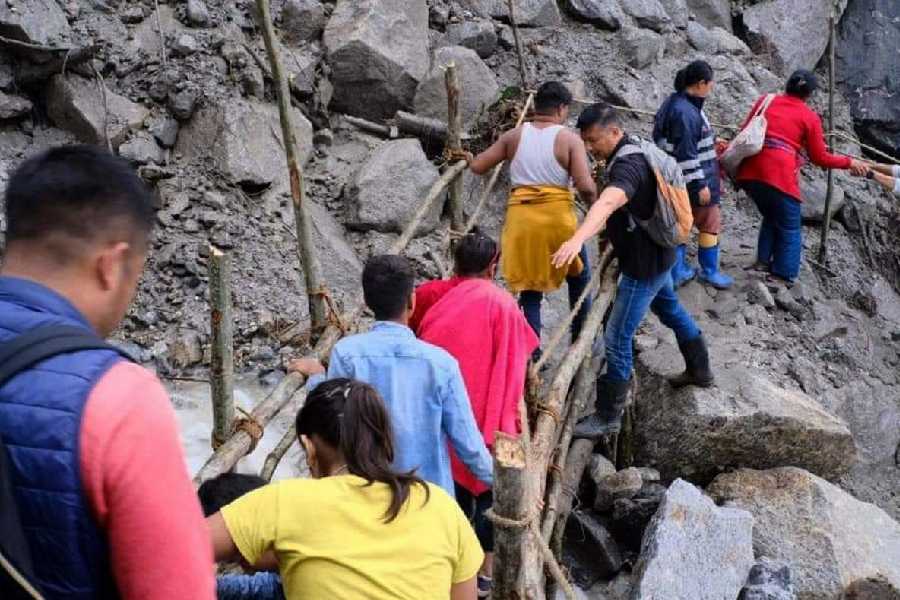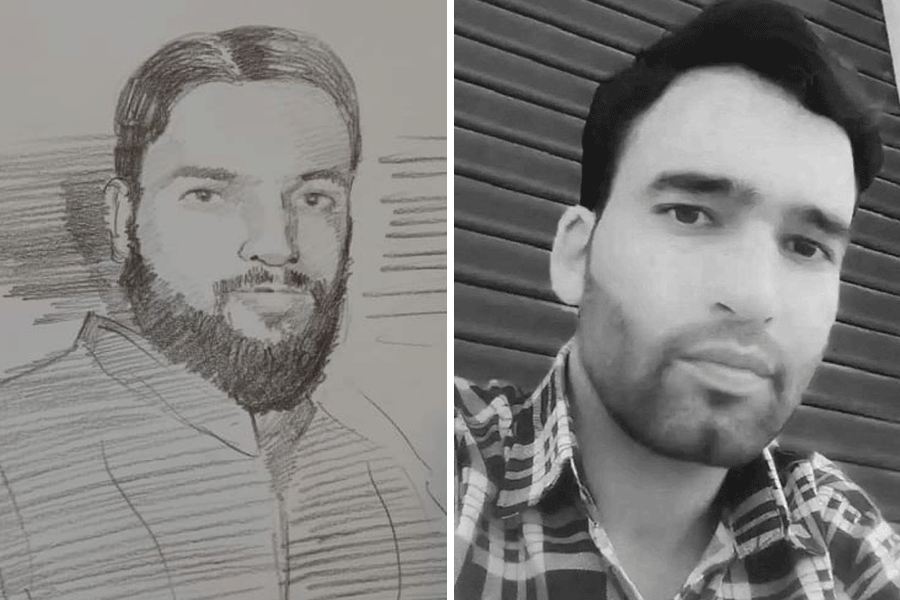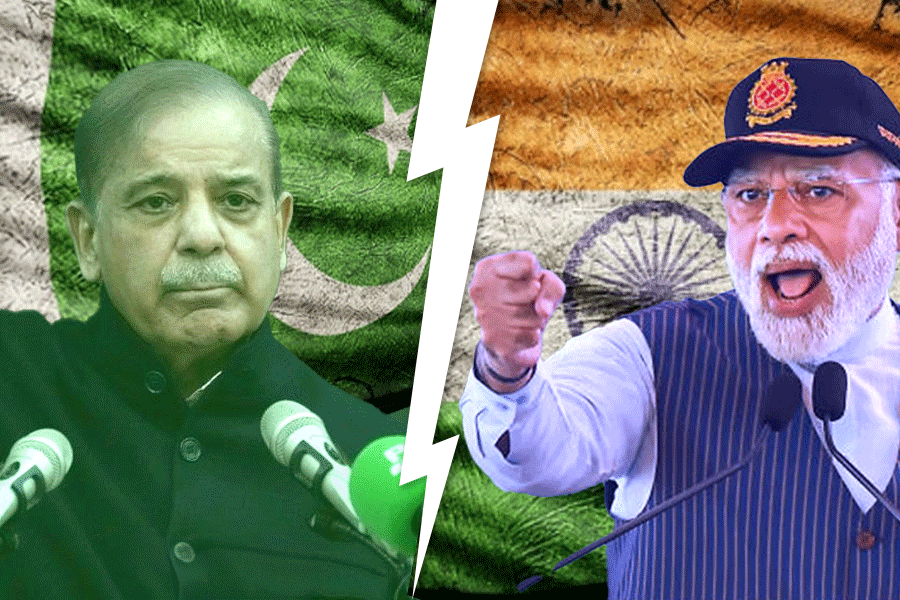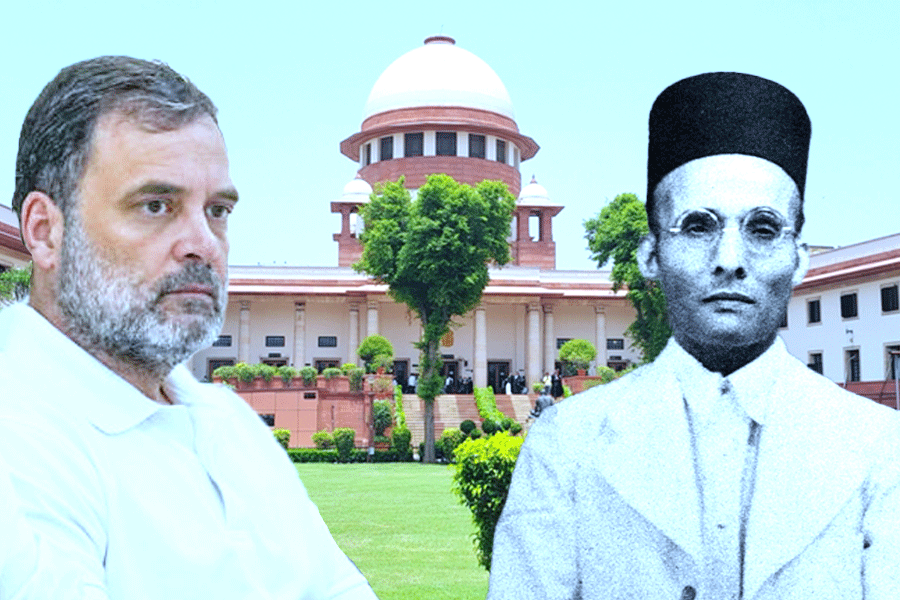
.jpg)
Mataji Gunashri is no more. But last week, death seemed to elude the Digambar Jain sadhvi on the 17th day of her gruelling fast-unto-death. Not a morsel of food, nor a drop of water, had passed through the 81-year-old nun's lips during this time. Her skin was reduced to a wrinkly gauze, having long disappeared into deep gorges on her skeletal frame. She lay quietly curled up under a thin, white bed sheet.
On and off, her white sari clad sevaks (helpers), maintaining a round-the-clock vigil by her side, stroked her stick-like legs or whispered the Jain mantra - namokarmaha - into her ears. Once, they removed the white sheet and gently carried her like a baby to make her sit on a bowl of cool water. Occasionally, cream was dabbed on her bony stomach and covered with a betel leaf to cool her insides.
The air was solemn, but not grim. A stream of visitors trooped in to pay obeisance to her. That Mataji Gunashri was observing sallekhana, the revered but daunting age-old Jain fast to death, is a matter of awe and respect among Jains. The practice is done to cleanse one's body of sins, shed bad karmas and pave the path to heaven.
"We believe people who observe sallekhana can see God," said Tejashree Mohan Magdum, a housewife who dropped in twice a day to pay respects to the fasting nun.
The 103-year-old Parshwanath Digambar Jain Mandir situated in Dudhgoan village, near Sangli in Maharashtra, was the venue of the sallekhana or santhara, as the Svetambara sect calls it. This traditional practice is a matter of great pride for the Jain community (around 4.6 million Jains live in India, according to the 2011 census).
But last month, the Rajasthan High Court banned the practice; it equated santhara with suicide. Responding o a PIL filed by a Jaipur lawyer, Nikhil Soni, the court struck it down as illegal and made it punishable under Article 309 and Article 306 (abetting a suicide).
The court relied on a Supreme Court judgment in the Gian Kaur vs State of Punjab case, in which a five-member constitutional bench had ruled that the right to life guaranteed under Article 21 of the Constitution was inherently inconsistent with the right to die.
Jain organisations, including the Digambar Jain sect, approached the Supreme Court, which stayed the ban.
Back at Mataji's sallekhana, D.A. Patil, central vice-president of the Digambar Dakshin Bharat Jain Sabha, explained that death was not to be mourned. Sallekhana was a "celebration of death" and "a way to attain moksha", he said.
Vimala Tai, who seemed to be the one in charge of the proceedings, along with the hawk-nosed sadhvi Padmavati at Mataji's sallekhana, felt no sadness about having assisted in a death.
"I am not sad, I feel just the opposite. I am happy because she is going to heaven and I helped her in her journey to shed her body and focus on her soul," said Tai, who has assisted in more than a 100 such journeys. She, too, wants sallekhana when she gets old. "I have assisted so many, why should I go empty-handed to God?"
Yet this moksha is gender specific, it seems. An elderly Digambar monk, Acharya Vardhaman Sagar, squatting a little away from Mataji's supine form, along with a younger Digambar monk, interjected to make a startling statement.
"Being a woman, Mataji will not be able to attain moksha. Women are physically unfit and weak to do severe penances. They have to return as men," he said, evoking a round of wry accepting smiles from the female sevaks.
There are two types of sallekhana: one done by a monk or nun, the other by an ordinary sravak
(follower of the Jain religion). A fast unto death can be for as long as a 12-year period. The practitioner gradually goes off business, property, material things, food and water. There is also a rapid 45 minute one which is taken just before one is dying. And then there is the sallekhana which is as long as it takes to lose your body.
"Not everyone can do sallekhana," the acharya affirmed. "It is an intensely deep practice and can be done only by one who comprehends its true meaning." In fact, texts penned by Jain monks state that sallekhana can only be attempted by a person who is either old or terminally ill or can be done during a famine or earthquake. Gurus, family and friends have to be consulted before it is attempted.
"Doing sallekhana is a voluntary decision with no coercion involved. They can be discontinued at any time," the Acharya added.
Sushil Jain, a Delhi-based senior advocate involved in acquiring the stay on santhara from the Supreme Court, firmly discounted any link between santhara and suicide.
"It is not a desperate act prompted out of depression but is about a slow leaving behind of material things and the world around you. We leave everything and cannot even call an insect towards us," Jain said.
Retired Rajasthan High Court judge Panachand Jain, who had been assiduously fielding exhaustive material on sallekhana since the PIL against it was filed in 2006, held that it was based on the philosophy of reducing attachments from the soul.
"The procedures set down when people can do sallekhana - as in when death is certain or when they are suffering from an incurable disease - are given in the texts Ratnakaranda Shravakacara," he said. The practice attracted negative attention, he believed, because of the glorification of sallekhana by ignorant later day monks.
Indeed, sallekhana has often attracted me-dia attention, turning the ritual into a public spectacle.
" Sallekhana should be done quietly and not made into a public show like it is done sometimes," Dr Bimal Jain, co-coordinator, All India Jain Digambara Samanvay Samiti in New Delhi, stressed. But it was a noble practice because "99 per cent of the Jains do sallekhana to avoid being a burden to others once they discover they have a terminal illness."
However, advocate Sushil Jain dismissed the belief that sallekhana was done to attain moksha. "Who has seen moksha or heaven to make this claim," he asked. Yet he defended it assiduously.
"Jains believe implicitly in sallekhana and our beliefs should not be tampered with. The state cannot interfere in our religious practices. I am practising sallekhana out of my personal choice and not harming anyone," he stated, adding that Article 25 of the Constitution gave people the right to practise one's religion.
According to him, the Supreme Court decision would take a couple of years as the matter had to be listed and arguments by both parties had to be heard.
Not all Jains, however, were convinced about the practice. Dr Pradeep Patil, founder member, Superstition Eradication Committee in Sangli, emphasised that no law in the country permitted voluntary death.
"It is a kind of suicide and is illegal. Why are we arresting people who go on fasts? How come there is one rule for them and another for us? Jains might have the right to practise their religion but the right to die is not there in our law," he held.
Not every ritual, he argued, was for religious purposes. Patil claimed that one Jain monk near Sangli allegedly used sallekhana to escape being charged in the murder of a Jain nun.
Patil - himself a Jain - believed that people were being brainwashed into believing they would attain moksha. "We are eagerly waiting for the Supreme Court judgment," he said.
The issue of santhara came into prominence recently with director Shekhar Hattangadi's award-winning documentary called Santhara. The filmmaker said it was "unfair" to just target sallekhana as being against the law.
"There are other traditional practices which go against the law like the restrictive entry of women into temples and child monks. As a liberal minded person, I believe in self-determination and personal choice. I don't take sides in my film," he said, admitting the issue was a "hot potato".
But does the ancient practice have modern day benefits? Jawarharlal Nehru University sociologist P.C. Jain would think so. He pointed out that a Jain scholar Sean Hillman of the University of Toronto had suggested in a book that sallekhana could be used in modern healthcare systems for people who were terminally ill. "It is a point to ponder since it is a soul purification process without harming anyone."
Mataji, indeed, went without a complaint. Sonabhai was a housewife before she became a nun a few years after her husband left their home to become a monk. Four months ago after a fall, she took her guru's consent to pursue sallekhana and took a vow.
Mataji died on September 23. The Dudhgoan village residents gave her a ceremonial funeral, carrying her body in a flower-bedecked sandalwood chair around the village.
"I am happy for my mother," said her daughter Suvarna, who was by her side from the time she started her sallekhana. "Her life will be a successful one after this."

